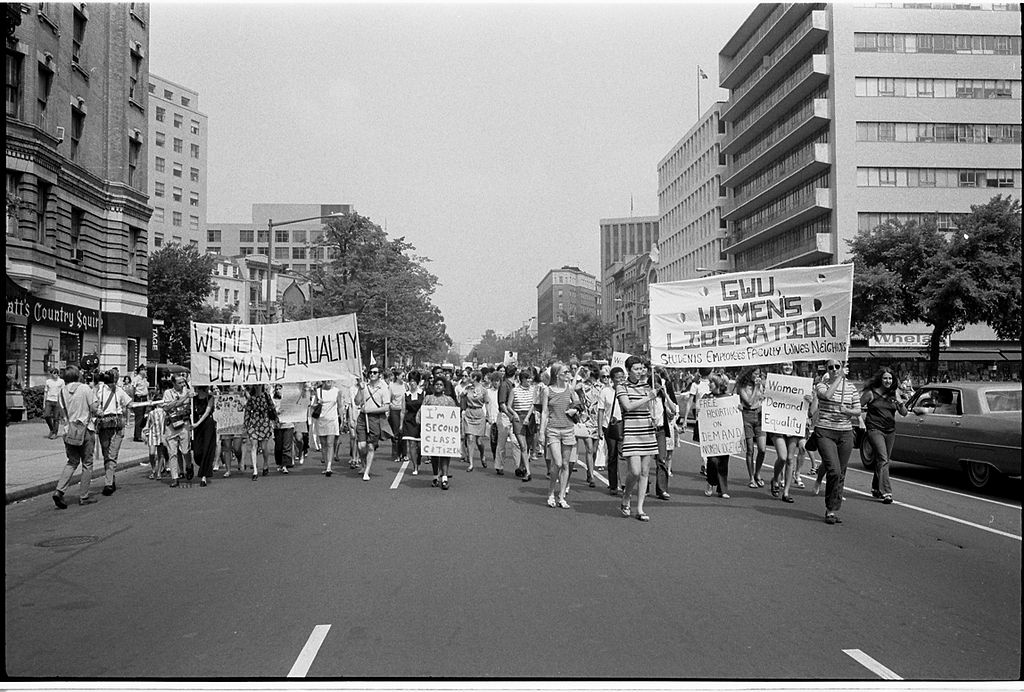
How Far Have Women Come?
How Far Have Women Come?
To mark the 50th anniversary of the ratification of the Nineteenth Amendment, which guaranteed women the right to vote, feminists, led by the National Organization for Women, staged a Women’s Strike for Equality in August 1970. Some 20,000 women participated in protests in New York City and elsewhere, making it the largest protest by women up to that time.
In January 2017, women’s marches around the world had an estimated five million participants, including half a million in Washington, D.C.

The 1970 protesters made three demands: equal opportunity at work and in education, a right to abortion, and free 24-hour child care. The 1970 protest came just months after New York became one of only two states in the country that had legalized abortion.
The 2017 protests, in contrast, had a broad agenda, involving immigration reform, the natural environment, gender and racial inequalities, and workers’ rights.
In 1970, women made up only 38 percent of the paid labor force. In that year, the typical woman with a full-time, year-round job earned 59 percent of what a typical man made, according to Census data.
By 2017, women had narrowed the workforce-participation gap significantly. Forty-seven percent of the labor force is now women, and in some industries, such as health services and education, women make up well over half of all employees. In four in ten families with children, women are the primary breadwinners.
For every two men who get a college degree this year, three women will do the same. Of the fifteen job categories projected to grow the most in the next decade in the U.S., all but two are occupied primarily by women. Those two: janitor and computer engineer.
In 1950, roughly one in twenty men of prime working age was not working. Today that ratio is about one in five, the highest ever recorded.
According to the Bureau of Labor Statistics, women now hold 51.4 percent of managerial and professional jobs—up from 26.1 percent in 1980. They make up 54 percent of all accountants and hold about half of all banking and insurance jobs. About a third of America’s physicians are now women, as are 45 percent of associates in law firms—and both those percentages are rising fast.
But women are still underrepresented in executive suites and in many of the most highly paid occupations. Just 27 percent of chief executives are women, along with 38 percent of surgeons and 23 percent of computer programmers, according to data from the Bureau of Labor Statistics.
Women still do most of the child care, and politics is still dominated by men. Women remain vulnerable to sexual harassment and abuse, sparking the emergence of the #MeToo movement to combat all forms of gender-based violence and discrimination..
In 2015, women earned eighty percent as much as a typical man, but there are stark racial and ethnic disparities. While white women make 81 percent of what a white man does, black women only earn 65.1 percent of what white men do, while Hispanic women make just 59.3 percent as much as white men. The gender gap has persisted despite the fact that women are now earning bachelor’s and advanced degrees at higher rates than men. Women earn less than men, on average, at every level of education.

According to the most recent data available, the U.S. ranks 31st in pay equity among 37 countries who are either members or partners of the Organization for Economic Co-operation and Development, an international coalition of mostly wealthy countries. Belgium ranks the highest, with women making 3.3 percent less than men.
Among the factors contributing to the gender gap is the high cost of child care. In Washington, D.C., home to the nation’s least-affordable child-care market, annual infant care costs $22,631, or 35.6 percent of the median family income, according to the Economic Policy Institute. In Massachusetts, infant care costs $17,062 per year, or 19.5 percent of the state’s median family income. And even in Mississippi, where infant care is cheapest, it costs $4,822, or 10.8 percent of median family income. The U.S. Department of Health and Human Services considers child care unaffordable if it exceeds 7 percent of a family’s income.
Women today live longer than men. They are more likely to attend and graduate from college. Women have advanced rapidly from clerical to managerial and professional jobs. Women, in unprecedented numbers have moved into formerly male-dominated fields. And women’s real wages have been rising for decades, while the real wages of most men have stagnated or fallen.
Yet income gaps persist, and women are still concentrated in traditionally female occupations. Women still do more housework and childcare even when they work full-time. Meanwhile, men still dominate top political and corporate positions.
Why is the United States Among the Last Countries to Have a Woman as Head of State?
Listen to the podcast below.